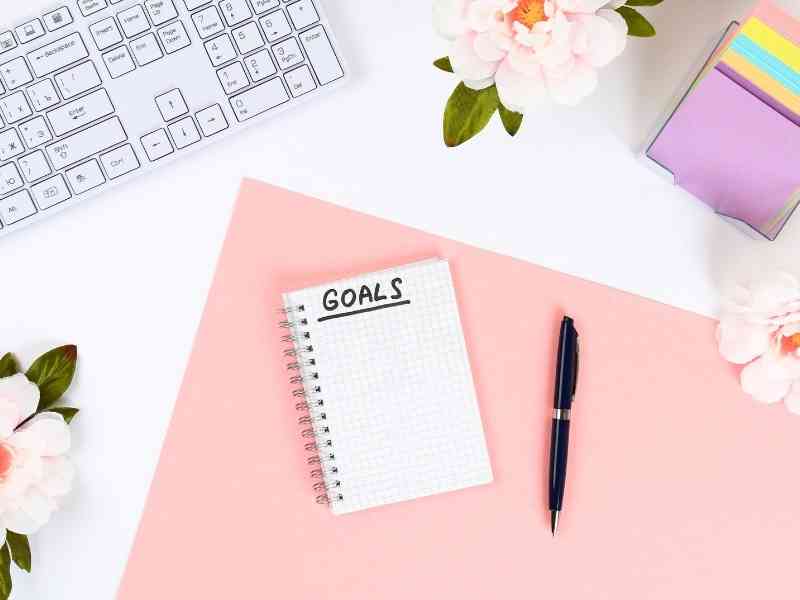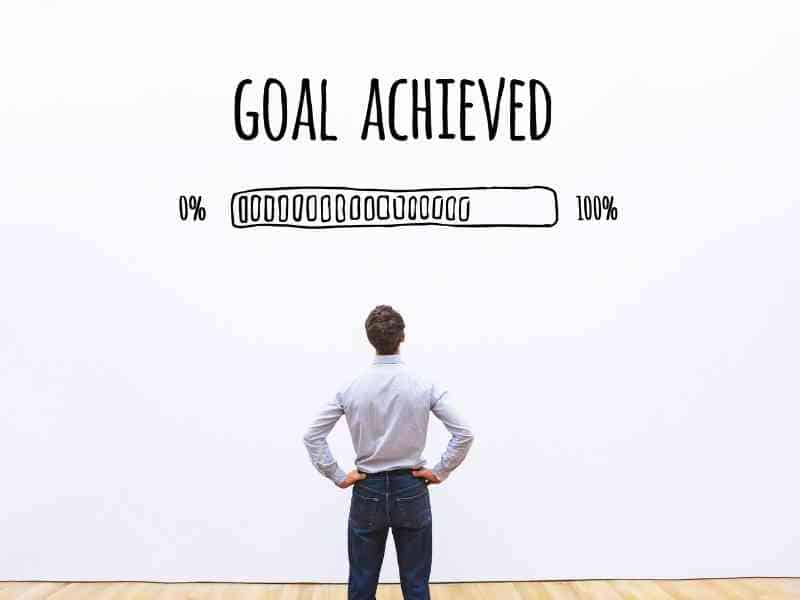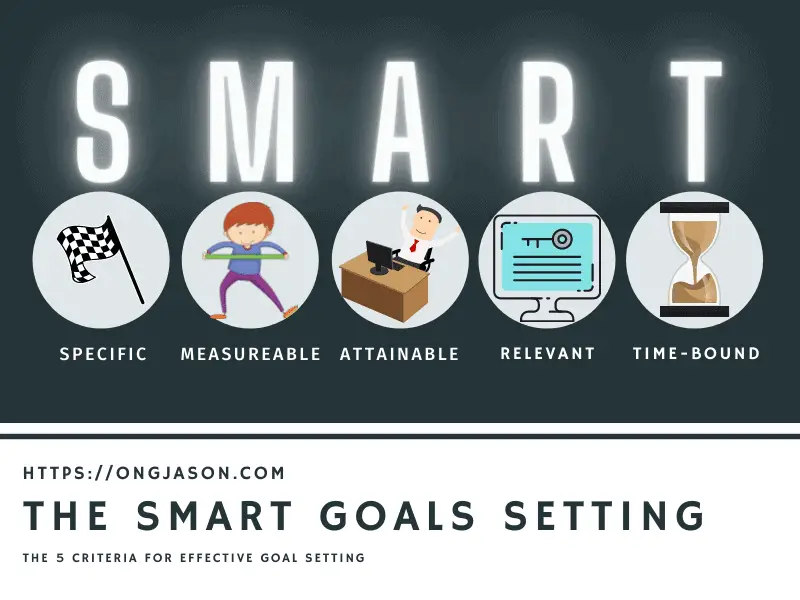Setting Yearly Goals: How Many and How to do?
In a survey, about 27% of people do new year’s resolutions. However, new year’s resolution is actually not really effective if we don’t know how to set our goals properly. In fact, due to people now knowing how to properly set how big and how many new year’s resolutions they should do, about 88% of people fail in keeping up their goals. Thus, this article is to help people who are struggling in keeping their yearly goals. This article will be about how many yearly goals should we set.
As a general rule, we should set only about 1-3 yearly goals. This is because setting too many goals in one year will cause us to burn-out that will most likely result in quitting. Choosing only 1 to 3 goals will make sure that we will form a new habit that helps us achieve our goals.
Because there are lots of people having trouble setting their yearly goals, this article will talk about how can we make our goals doable. Furthermore, I also recommend you to check out another article that differentiates daily, weekly, monthly, and yearly goals.
In that article, you are going to learn the advantages and disadvantages of the various frequency of goal setting. Here is the link: Goal Setting: How Often Should you Set?
With those in mind, let us begin answering more on how can we make our yearly goals stick.

How many yearly goals should you set?
It is recommended to have only 1 to 3 yearly goals because too many goals will cause us to lose willpower which will eventually lead to burnout. In achieving our goals, it is more important to do small things consistently rather than doing big things then quit.
There is a big reason why it is recommended to just do at most 3 yearly goals.
While it really looks cool to have a lot of goals, we are not good at multitasking.
In fact, if you can just choose one goal for the year, it will be way better because you can focus on one thing.
In life, focusing all of our energy on attaining just one thing produces amazing results.
Let’s give myself as an example.
When I first started making websites, I really wanted to make a lot of websites because I really think that they are all cool.
Thus, for the first few months to about 2 years of my life as a blogger, I was focusing on four websites.
What happened there is that I lost my concentration, made articles for 4 websites, and all sites failed.
The lesson I learned at that time is that in order to achieve something big and prevent failing, I need to just focus on one thing at a time, and go to other goals only if I am finished with the one I am currently doing.
That’s the moment I’ve learned about setting one important goal every time.
Another example is when I was at the lowest point in my life. I had lots of problems.
What I did is that I’ve pointed out the biggest problem I have that can also affect my other problems positively.
At that time, I focused on fixing my finances since that was my biggest problem at that time.
In my life, I learned to focus on one thing at a time. At most, I will focus on 3. That’s why it is important to learn to focus on new things as I will discuss further.
So to answer how many goals should you set at once, You should set only 1 to 3 goals at once. This will make us focus our energy on one thing which will bring significant results. Remember that there is no big success in mediocrity. Only by focusing can you bring something extraordinary.
Is it bad to have too many goals?
It is bad to have too many goals all at the same time. Not only would you produce mediocre results with all of the things you are doing, but you will also reduce your willpower significantly which can result in quitting even before reaching your goals.
As you can see in my example, I’ve made the mistake of making too many goals. In fact, I also made this mistake on not just yearly goals, but also daily goals.
When I was new, I made the mistake of following self-help experts on their morning routine. While it is really cool just to think how disciplined they are, it didn’t work for me.
Let me show you the morning routine I’ve followed.
- Waking up at 5:30am
- Meditate for 15 minutes
- Exercise for 30 minutes
- Read a book for 30 mines
- Take a Shower
- Prepare for Work Day
With that many things to do in a morning routine, I gave up on the 3rd day.
It is too much for a beginner like me.
But that doesn’t mean that you can’t reach that level of discipline. What I mean is that we have to set our pace first.
What do I mean by setting our pace?
We have to start things small.
It is the application of starting one to three things again.
The trick here is to form a habit. You form habits by doing things consistently over time. For example, if I want waking up early to be a habit, I need to wake up early consistently. That is the only way for me to make waking up early a habit.
The application here is that you should continuously do only one to three things over time. Only a few so you can easily track them and do them every day. Don’t be like me who did all of them at the same time and wind up failing.
Once you’ve started forming these into habits, then it will be easy to apply another.
It is like going to the gym, you start by lifting light weights, then go with the heavy ones after you’re used to the lighter weights.
Now, in yearly goals, we tend to go big on our goals. But I advise you to take things slowly. In the next section, we are going to discuss why it is recommended to not have big goals in your yearly goal list, and if you really have a big goal in mind, what can we do to make it smaller and doable.

Why are Big Goals not recommended in a Yearly Goal Setting
Setting big goals yearly is not recommended because we tend to overestimate ourselves when we do yearly goals. This means that we often set too big goals that most of us will just freeze and think about how we could do it. It is better to set smaller goals to get results.
Look at the photo above, it is the best representation of how to properly set yearly goals.
Remember that your goal should be attainable and not something that can’t be done.
Furthermore, your goals are done by doing smaller steps consistently over time. Like the photo above which looks like your goal is filling up the more you do small things.
The reason why big goals are hard to do on a yearly basis is that we are already looking at the end without thinking of the steps required.
For example, it might be your yearly goal to lost let’s say 50 lbs of weight.
Then what would you do to achieve your yearly goal? What should you do every day? What should you do weekly? When should you follow up if the method you’re doing is working or not?
As you can see, there are lots of questions to ask. But ultimately the solution is very simple.
Make your goals doable and realistic.
In here, let me explain how to make our goals realistic. Remember the SMART goal setting.

Smart goal setting simply means that we are making our goals very attainable and doable.
When making yearly goals, we have to take note of these 5 aspects.
- Specific
- Measureable
- Attainable
- Relevant
- Time-bound
I’ve discussed SMART goals in more detail in another article which talks about how to create our goal list. It is also very good if you want to make sure that your goal setting will not only be time-efficient but also 270% more effective: How to Create a List of your Goals
But here are the basics.
Let’s say that my goal is to “lose some weight”.
Now, let us use SMART goal settings as an example.
To make it Specific and Measurable, I have to say that “My goal is to lose 50 lbs of weight.”
However, there is something wrong with that. You see, for me, losing 50 lbs of weight is very hard to do and is quite unattainable since I’m not that heavy. So let’s make it attainable.
“My goal is to lose 20 lbs of weight.”
Now, that’s more attainable. Lastly, I need to make it time-bound. Time-bound means that I have a timeframe on when I can achieve the goal.
“My goal is to lose 20 lbs of weight in one year.”
Here are more examples of SMART goals so you can also make yours.
- I am going to schedule a meeting with my boss this week
- I am going to be debt free next year
- I am going to have a side job next quarter
- I am going to travel to Europe next year
Can you see the difference? It is like you’ve built a way for you to make your goals doable.
Using the SMART goal setting is very effective since you’ll be able to set realistic goals. Remember that we usually overestimate our abilities on our yearly goals that’s why most fail.
But let us make things even better. Now that we have a means to not only make our goals few, but we also made it very attainable. Let’s now make things even better.
How to succeed if we have a big yearly goal
Here is the secret to making sure that you are going to achieve 100% of your yearly goals.
Break your goal down into pieces.
It is that technique that made me where I am right now. It is the method that made things very easy.
Because of this, yearly goals became a breeze to do.
So the basic thing we have to do is to break down our SMART goal into smaller SMART goals.
For example, my quarter year goal for this site is to make 90 articles.
If you stare at that, I have to make 90 of these types of articles. That’s a lot and quite scary.
But let us break them down into smaller pieces.
If my goal is to make 90 articles per quarter, then I should make 30 articles per month. Furthermore, I have to make around 8 articles a week.
That’s right, from the scary 90 articles, I’ve turned it into a smaller smart goal which is 8 per week. Now, it is easy since I can actually make 10 articles per week.
Problem solved.
Can you see the magic of breaking things down? The problem with people who do yearly goals is that they tend to forget that the key to achieving great things is that they need to start small.
That’s why I stressed about the photo of a loading goal. This is because goals are not instant. You have to do small things to achieve them.
In fact, the smaller form of goals is called objectives. Finishing a goal means you’ve achieved lots of small objectives.
For example, losing weight means that every day, you might be having an objective to eat right and exercise.
For me, it is to write 8-10 articles a week. This makes our goals very doable.
Conclusion
Now that you’ve got what it takes to not only set how many goals a year to get the best result, you also know how to make goals in order for you to succeed in your yearly goals.
You now have what it take to completely finish your goals and be part of the top 12% who finish their yearly resolution. If it is not your New Year’s resolution, then it is completely fine. What matters is that you now know how to properly set your yearly goals.
So let me end this with the central point of this article. It is best to only have 1 to 3 yearly goals. This is to make sure that you are focused on the most important goals and not waste your time and energy on others. Also, make sure that your goals are attainable by using the SMART criteria.
You can make your goals more attainable by breaking them down into smaller objectives.

“Only the things I love.“
ongjason.com is reader-supported. When you buy through links on the site, I earn an affiliate commission.
If you’re following me, you’ll know that I believe it is essential to have some tools, whether it’s for personal development or lifestyle in general.
So, here are the things I love.
YouTube
If you want to learn things for free, I recommend watching my YouTube Channel. Click the Button Below to go straight into my Channel. 🙂
Okay, let me first explain my Channel.
I believe that I really can’t explain everything too well on my blog. That’s why I created a YouTube Channel so I can easily explain a lot of things. Plus, I believe that Video Sharing is the future.
Recommended Books
The next thing is books. Books are, for me, one of the cheapest ways to get invaluable information. We can learn personal development, finance, career, relationships, and many more from books.
Here, I will be listing my favorite books in different categories.
- For Beginners – 7 Habits of Highly Effective People by Stephen Covey – Personal development has a lot of concepts and ideas to learn. Thus it can be really hard for beginners to know where to start. Thus, I recommend this book since all the basic concepts of personal development are here(except finance, check what I recommended for that)
- Productivity – The One Thing by Gary Keller – This book teaches us the power of focusing on one thing which is the ultimate source of productivity. The concepts taught are what I am using to constantly publish YouTube videos while maintaining this website.
- Busy? – Make Time by Jack Knapp – This book teaches us how to make time for the things we love. The concept is really simple but I think that makes it a book worth reading.
- Health – Lifespan by Dr.Sinclair – This Book teaches about the latest scientific research on lifespan. In his book, he has shared numerous things he is doing to slow down his aging process. This can be as easy as eating less which he recommends.
- Finance – The Richest Man in Babylon by George Clason – Perhaps one of the first books I’ve read about Finance, this book for me is the best if we are talking about learning basic finance such as basic saving and investing. The concepts are very simple but effective.
Audiobooks
Take this advice as a grain of salt.
I don’t recommend buying Audiobooks one by one. I mean, audiobooks can be quickly finished by listening while working out or doing some mindless tasks.
So here is to save you some money. Just go for a monthly subscription to Audible. I believe that you will save a lot of money with that plus, they usually give freebies to anyone starting.
My Audiobook Recommendation will always be the same as my book recommendations, but I personally like The 5 Second Rule by Mel Robbins. I like how she is so casual while reading her book.







